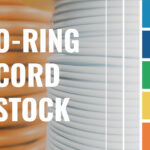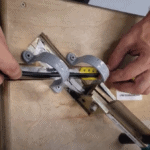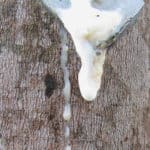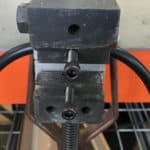Vulcanized rubber is much stronger than traditional rubber. It can withstand greater pressure and stress and is much more elastic, which is why many manufacturers prefer using vulcanized rubber in their businesses. Vulcanized rubber’s increased strength and elasticity allow it to be stretched to a much greater degree without warping or becoming deformed. Vulcanization also means that the rubber is better protected against abrasion or other damage caused by scraping.
But what exactly is vulcanization, and how does it work? In this article, we’ll look at vulcanization and the history and uses of vulcanized rubber in greater detail.
What is Vulcanization?
There are two types of rubber: natural and synthetic rubber. Natural rubber is slightly stronger and has less of an odor, whereas synthetic rubber is more resistant to heat and age. Synthetic rubber is also used in products for people who are allergic to the proteins found in natural rubber. 70% of rubber used in the United States today is synthetic, but both types are commonly used worldwide.
Natural rubber is composed of polyisoprene molecules. It’s obtained from the cells or latex ducts of rubber-producing plants. While there are more than two hundred plants capable of producing latex, most natural rubber comes from the rubber tree (Hevea Brasiliensis).
Synthetic rubbers are artificial polymers produced from petroleum by-products. Coagulated natural and synthetic rubber are not very useful in their initial states. It’s sticky, thermoplastic, and soft with very low tensile strength and elasticity, which is why it needs to be subjected to processes like vulcanization before it can be used. Natural and most types of synthetic rubber can be vulcanized to improve their properties and make them tough and firm enough for use. The vulcanization process involves adding and heating rubber with sulfur to improve its elasticity and strength.
Polyisoprene (natural rubber) and styrene-butadiene rubber (SBR) are the polymers that are most often vulcanized. These rubbers are often used to manufacture vehicle tires.
Vulcanization techniques can vary, but they usually involve mixing crude rubber or other elastomeric materials with 5-30% sulfur or other agent (to elicit a cross-linking reaction) with an activator, accelerator, and retarder to form a cross-linked molecular network.
Vulcanization using sulfur alone is very slow and can lead to oxidative degradation, resulting in poor mechanical properties. This is why accelerators are added so that vulcanization can occur at a lower temperature and with greater efficiency. (This also reduces the amount of sulfur needed, which improves the aging properties of the vulcanized rubber).
Commonly used additives include zinc oxide (activators), guanidines, thiazoles, xanthates, thiurams (accelerators), acetic acid, calcium chloride (coagulants), amines, phenolics and phosphites (anti-oxidants), color pigments, oils, and anti-foaming agents.
Active vulcanization must be avoided during the mixing stages to prevent cracks from forming when the rubber is molded or shaped.
The Science Behind the Vulcanization Process
Vulcanization revolutionized the way rubber is produced and how it can be applied. Before vulcanization was discovered, natural rubber was coagulated using acid and heat to make it malleable. At high temperatures, the rubber would become sticky and start to melt. However, when the temperature was too low, it would quickly become brittle. Using rubber in an industrial setting was expensive and impractical using these methods.
So, how is rubber vulcanized? Natural latex sap tapped from trees contains isoprene molecules. As latex dries, the molecules crowd closer and attack the carbon double bond of the adjacent molecules. The double bond breaks, and the electrons reform to bond the isoprene molecules together, turning them into monomers. This process continues until many isoprene molecules join and create long strands or chains of monomers (polymers).
The aggregate of monomer chains of isoprene is called polyisoprene, which sticks together by forming electrostatic bonds. This lets the strands move relative to one another when pulled, and return to their original state when relaxed, giving rubber a degree of natural elasticity.
By adding sulfur and the right temperature and pressure, the sulfur atoms attack the double bonds of the carbon atoms within the isoprene strands and bind them. Sulfur atoms also bond to themselves and then link the various strands of isoprene together. This is known as cross-linking in its permanent state.
Crosslinking is the reaction mechanism that gives vulcanized rubber its tensile strength. In the simplest term, cross-linking is a chemical process whereby polymer chains are linked together. It can be compared to a bowl of uncooked spaghetti. It’s very easy to pull each strand from the bowl, but once it’s cooked and dries, they stick together and are harder to pull apart.
Polymer chains that haven’t been cross-linked move around freely, whereas cross-linked chains are much less likely to flow under stresses caused by heating or pulling. They are also more solvent resistant and can be used for tougher coatings or binding applications.
Crosslinking creates a netlike structure that gives more stable elasticity to rubber, and once it’s been created, it cannot be broken down easily at all. This permanent nature of the change in rubber chemistry is called Thermoset.
There are three stages of vulcanization, namely the induction, cross-linking and optimum state:
- During the induction (or scorch) stage, the slow cross-linking reaction starts at a temperature between 180°F and 230°F. Molded rubber is usually shaped before it’s heated, as cross-linking makes it impossible to shape your rubber;
- During the cross-linking or curing phase, permanent cross-links are formed. The mixture is heated up to 250-400ºF to speed up the vulcanization resulting in fast cross-linking.
- In its optimum state, vulcanized rubber can return to its original length after up to ten deformation cycles under tension. If the curing process continues beyond the optimum state, it’s known as overcuring. The final optimum state of cure or overcure means that all of the properties of the rubber compounds are forming until it reaches elastic behavior.
The cross-links formed depend on the amount of vulcanizing agent, reaction time, temperature, and the nature of the rubber itself.

Who Invented Rubber Vulcanization?
Human beings have been using rubber for thousands of years. The ancient Olmecs were the earliest practitioners of rubber science, mixing vine sap and boiled rubber sap to create their own vulcanized rubber. This was used for waterproofing and, of course, an early form of basketball!
In the 1820s, a chemist called Charles Macintosh teamed up with Thomas Hancock, an inventor, to refine the process. They dissolved natural rubber in benzene and heated it to produce rubber sheeting and waterproof fabric. Sulfur was added to the process in later years.
However, modern vulcanization as we know it can be attributed to Charles Goodyear. Goodyear became obsessed with rubber after spotting a life vest in a general store. Goodyear invested all of his time and resources in rubber. One day, he accidentally spilled a mixture of rubber and gum on a hot stove, where it “charred like leather” and hardened. He believed stopping the process at the right time would make rubber more adhesive and stable. Goodyear began “curing” rubber and sent samples to Thomas Hancock. Hancock noticed sulfur on the surface and began adding sulfur to his rubber processing.
Goodyear obtained a US patent for vulcanization a few weeks after Hancock beat him to the UK patent. The term vulcanization comes from a friend of Hancock’s, referring to the Roman god of fire, Vulcan.
Goodyear’s discovery launched an industrial revolution, but sadly his persistence didn’t pay off, and he died more than $200,000 in debt. The famous Goodyear tire company was later named after him to acknowledge his important contribution to the industry.
As mentioned before, using sulfur alone during the vulcanization process isn’t very effective, fast, or economical, which is why rubber wasn’t widely used until an American chemist George Oenslager discovered that adding accelerators to the vulcanization process improved the curing process in 1912. The vulcanization method he invented is still largely used today.
What Are the Uses and Benefits of Vulcanized Rubber?
Vulcanization improves elasticity, hardness, tear strength, and resistance to organic solvents and abrasion. It also offers excellent resilience, low water absorption, and oxidation resistance and makes an excellent electrical insulator.
If natural rubber is vulcanized correctly, it retains and enhances its benefits without the weaknesses that exist at a molecular level. After vulcanization, the newly crafted polymer chains reinforce the rubber; it shrinks and becomes harder. This makes vulcanized rubber far less susceptible to damage or deformation and gives it increased tensile strength.
This durability makes a great material for use in a number of products where durability and water resistance during rugged activities are of the utmost importance (like sports watch straps or rubber shoe soles). The most common usage of vulcanized rubber is in tires. Tires are often reinforced with carbon black for even greater strength. More than one billion tires are manufactured worldwide on an annual basis.
Vulcanized rubber is also used to produce rubber hoses, shoe soles, insulation, vibration damper, erasers, shock absorbers, children’s toys, conveyor belts, rubber-lined tanks, and more.
Is Vulcanized Rubber Environmentally Friendly?
Vulcanized rubber is tougher and less likely to decompose than natural rubber, but there is evidence that vulcanized rubber will biodegrade in hot composting bins. The benefit of vulcanization is that rubber products can easily be refurbished or repurposed because it’s so durable. Old rubber tires can be retreaded or reused as asphalt, landscaping mulch, turf infill, or livestock mats. It can also be added to compounds.
Conclusion
Vulcanization creates stronger, tougher, and longer-lasting rubber products in a cost-effective manner. Thanks to inventors like Hancock and Goodyear, vulcanized rubber has become an affordable and accessible product that can be used and reused year after year.
Vulcanization at Global O-Ring
Global O-ring has in-house vulcanizing capabilities. We regularly create custom o-rings by joining cord stock. We provide a vulcanized splice of rubber cord stock into o-rings using heat to cross-link them, creating an extra-strong joint.
If you require sealing products as a manufacturer or distributor, contact us to request an obligation-free quotation or to discuss your options with one of our knowledgeable and friendly staff members.

 English
English  Español
Español  Français
Français  Português
Português  Deutsch
Deutsch  Italiano
Italiano  Русский
Русский  中文
中文  日本語
日本語  العربية
العربية  हिन्दी
हिन्दी 



